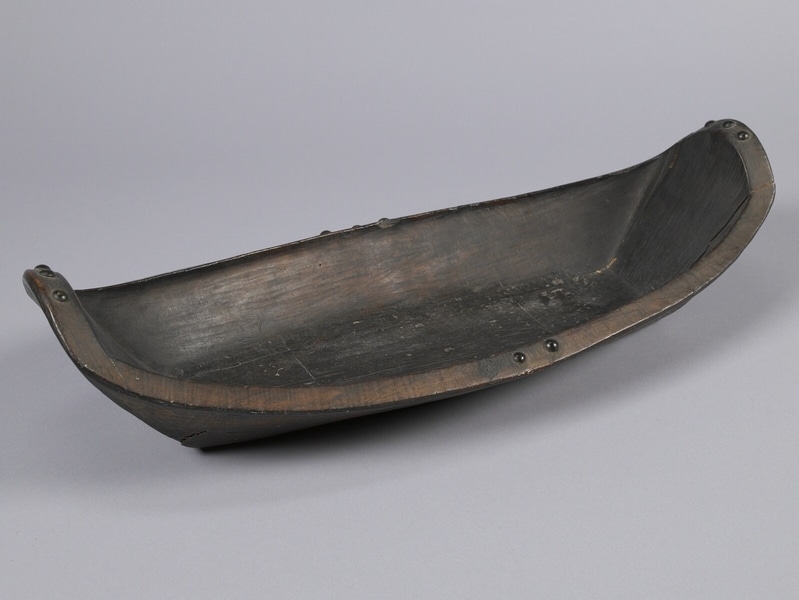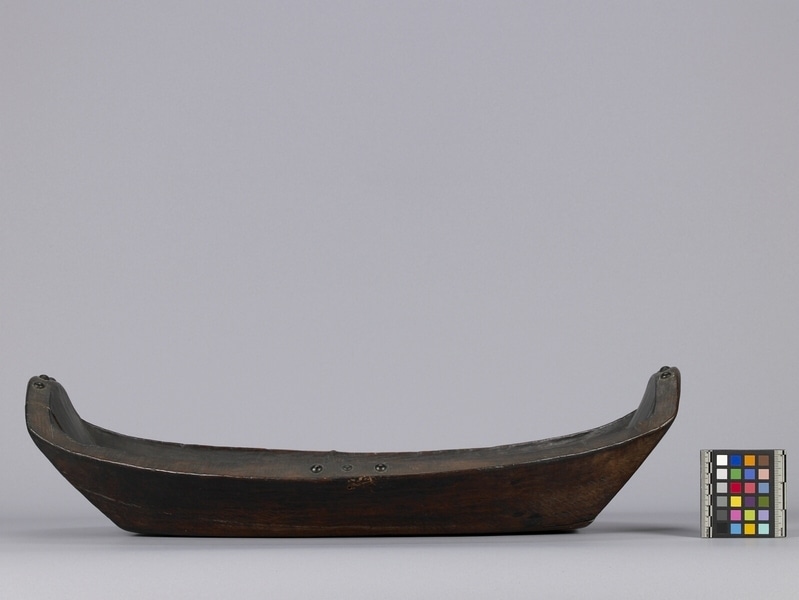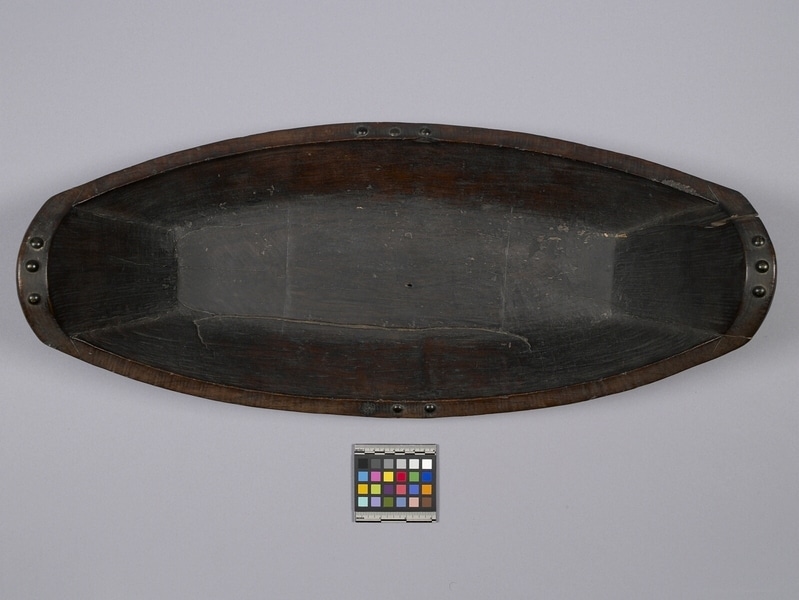Dish Item Number: A3389 from the MOA: University of British Columbia



Description
Dark brown canoe-shaped dish decorated with brass studs which have been adhered to the rim. Adze marks visible on the exterior of the bowl. Brass studs grouped in sets of three, centred on the rims of each of the four sides. Small holes have been made through the base of the dish and one of the longer sides.
History Of Use
Barnett (1955) notes that bath-tub shaped dishes, like this one, are characteristic of the Straight of Georgia region. These dishes, which were generally made from one piece of hollowed out wood, were usually three to five feet in length. He noted that the smaller versions, like this one, were often used as oil dishes. Large dishes were used at feasts, and placed before one to three distinguished visitors, with the intent of making an imposing offering. Feasts and potlatches are usually held to celebrate a change in status of a family member. Guests are invited to witness, and thereby make legitimate events such as the transfer of a name. They are also held to celebrate marriages and as memorials for deceased family members.
Cultural Context
domestic; ceremonial
Item History
- Made in British Columbia, Canada before 1934
- Collected in Koksilah, British Columbia, Canada between 1893 and 1934
- Owned by George H. Raley before November 1948
- Received from H. R. MacMillan (Funding source) and George H. Raley (Seller) during November 1948
What
Who
- Culture
- Coast Salish: Quwutsun'
- Previous Owner
- George H. Raley
- Received from
- H. R. MacMillan (Funding source) and George H. Raley (Seller)
Where
- Holding Institution
- MOA: University of British Columbia
- Made in
- British Columbia, Canada
- Collected in
- Koksilah, British Columbia, Canada
When
- Creation Date
- before 1934
- Collection Date
- between 1893 and 1934
- Ownership Date
- before November 1948
- Acquisition Date
- during November 1948
Other
- Condition
- fair
- Current Location
- Case 7
- Accession Number
- 1960/0376